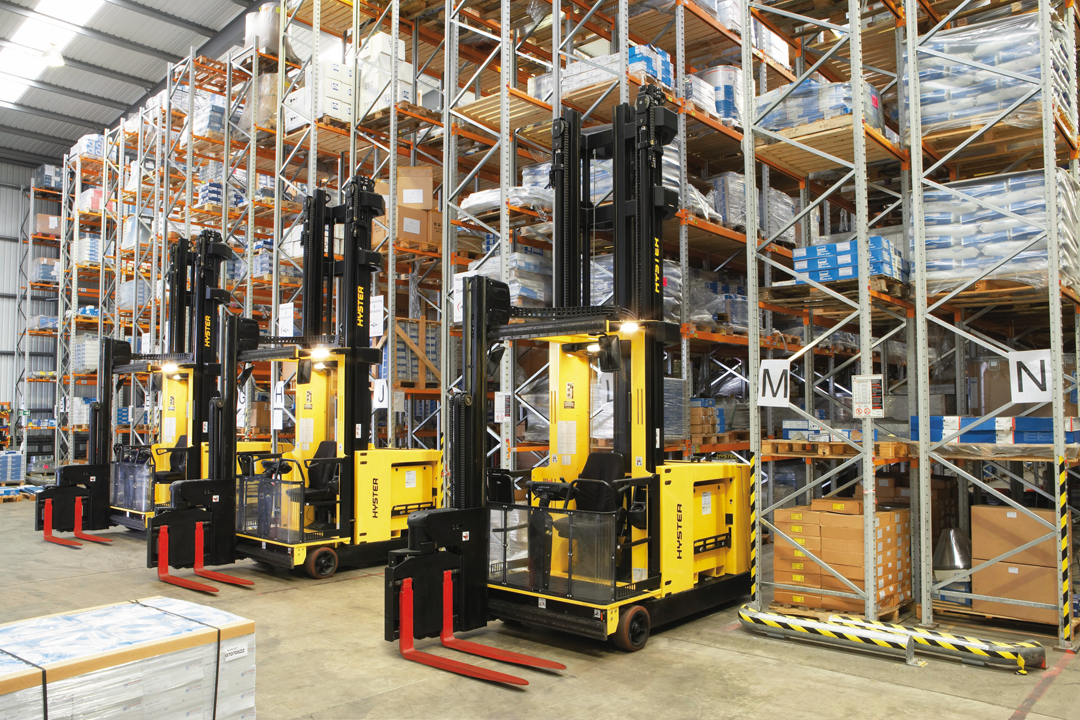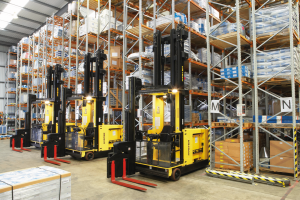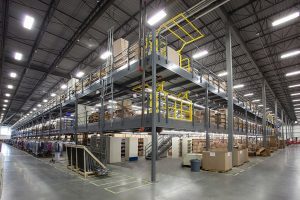
MRO Supply Chain – using digitalization to streamline processes and decision-making
Sada Haque says that the journey to become pioneers in our business objectives will greatly depend upon data-driven strategies, rather than gut feelings.
June 18, 2018 | By Rehana Begg


Sada Haque, director, Sustainability, Innovation & Digitalization, Wajax, provides insights on optimizing the MRO supply chain. Provided by: Wajax.
For all the effort devoted to improving the downtime, streamlining processes and honing decision-making, relatively few industrial plants claim that they’ve successfully optimized the collaboration between maintenance and operations. It’s an ongoing challenge, and one that Sada Haque is keen to explore through the lens of his new role as director of sustainability, innovation & digitalization at Wajax.
Machinery and Equipment MRO spoke with Haque to gain insights into how he intends to blend innovation with traditional best practices at one of Canada’s oldest industrial products distributors and services providers.
 MRO: You have made a significant change after building an impressive career at SKF. Congratulations! What spurred your move?
MRO: You have made a significant change after building an impressive career at SKF. Congratulations! What spurred your move?
SH: I recently completed my Global Executive MBA from Rotman School of Management at the University of Toronto. I was looking for a challenge where I could possibly disrupt an industry. The industrial market is up for grabs. We have always been laggards when it comes to technology and innovation. To be able to realize such a disruption, I needed to be able to work with an organization that would have interface with OEMs, vendors, clients, service centres, engineers, technicians and end-users. Wajax offers that platform and has the culture and desire to be the pioneers in what they do.
 MRO: How has your previous work history prepared you for this role?
MRO: How has your previous work history prepared you for this role?
SH: My previous role gave me the opportunity to work with organizations globally and understand their needs. Based on their needs, I had the privilege to design the asset management strategy and maintenance and reliability programs for many customers. My background is in engineering and that, along with an MBA, gave me a good balance of technical competence and business acumen to shape me as a strategic leader. It’s an amazing accomplishment when you know that you have played a pivotal role in helping other organizations go through their improvement journey, enhance their productivity and profits, and meet their business objectives. You know you have made a difference when your customers succeed.
 MRO: How are you settling into your new routine and what are your priorities?
MRO: How are you settling into your new routine and what are your priorities?
SH: It has been an exciting transition so far. As one of Canada’s oldest industrial companies, Wajax has an extensive footprint across the nation. The organizational culture is warm and welcoming, making my integration very smooth…. My current focus is to build upon our brand equity by developing value-added solutions for our customers, enhance the sustainability of our business by positioning us as the partner of choice, and to develop new business models that challenge the current industry norms. How can I use big data, artificial intelligence (AI) and digitalization to disrupt this market?
MRO: What is Wajax’s vision for the Industrial Internet of Things (IIoT), digitalization and innovation?
SH: Digital innovation is the need of the hour, with the emergence of Industry 4.0, smart manufacturing and IIoT. The space is highly competitive and customers are looking for streamlined and more efficient solutions. Naturally, Wajax is driven to seize these opportunities and transform our business models in order to meet these demands and retain our competitive advantage. Despite being at the top our priorities, we don’t want to innovate for the sake of it. We want to develop a digital culture that is effortless and almost a way of life. Our objective is to incorporate this new wave of change and make the transactions with our customers smoother and more tangible, but also effectively trackable. From automated warehouse operations to implementing customized solutions derived from historical data analysis, Wajax is working towards more reliable and precise delivery techniques that guarantee extended value throughout the lifecycle.
MRO: How does sustainability factor into your Wajax portfolio?
SH: The industry is currently very transactional. Vendors and suppliers are constantly trying to push their products and services with an inside-out approach. But at Wajax, we are taking a more in-depth look into how we can be better. We believe in customizing our value propositions and we believe in the voice of the customer (VoC). With our sustainability efforts, we would like to understand our customers’ needs and perform on-site asset management assessments, so that we could design customized solutions and road maps to help customers meet their objectives. These three-day VoC assessments help us understand the pulse of our customers and allow us to entangle with our customers to start a new partnership with this outside-in approach. The objective is to meet the customers where they are.
MRO: What does digitalization mean in this context?
SH: At Wajax we believe digitalization is an avenue to help our customers optimize their businesses and make it profitable and sustainable. Digitalization is widely mistaken for capturing data, perhaps big data. The idea is to collect smart data, which, put together, effectively can become useful information for the business. This information, when used to enable business processes and models becoming much more streamlined, would become a source of knowledge that ultimately leads to wisdom and competitive advantage.
MRO: What is its implication for MRO markets, distributors and OEMs? Why does Wajax support the trend?
SH: Capturing big data is not a new concept. Our customers have already embarked on a journey to equip their critical machinery with all possible sensors to get all possible data/early detections and warnings. However, digitalization, if done the right way, would have five components:
- Data Capturing – Hardware prices are declining by the day; however, more sophisticated technology is still at a premium. Equipping all machinery with online monitoring systems is still a distant dream. Meanwhile, we need to find ways to crowdsource this data and enable this through gamification of our data- capturing process.
- Data Integration – Everyone is building new sensors and customers are overwhelmed with several dashboards to monitor the same equipment. Suppliers need to work on a common platform to integrate data and provide better value.
- Data Analytics, Prognostics and Learning – Enhance AI, machine- and deep learning to ensure early detection of failures and failure modes.
- Supply Chain Automation – Customers should have the ability to get the parts on-demand and factories should optimize their production to complement this demand, albeit data driven.
- Optimization and Sharing – As an industry, we need to continuously learn and share the data that we gather. This creates a win-win situation for all of us, essentially driving our costs down.
Digitalization is a crucial element that ensures Wajax’s ability to retain its leadership and competitive advantage in the market. The journey to become pioneers in our business objectives will greatly depend upon data-driven strategies rather than gut feelings.
MRO: How does digitalization deliver value to existing business models?
SH: On the demand side, for end-users, digitalization will help them get early warning of failures with defined failure modes and remedies. Reduced unplanned downtimes result in significant savings to the customer. To get the MRO just in time will ensure low inventory levels and higher operational efficiencies. On the supply side, for our OEMs and vendors, their manufacturing will be streamlined with optimized factory throughput. This will help lower the costs, improve bottom lines and pass on the benefits to the customer. For distributors like Wajax, digitalization will enable us to connect our vendors with the end-users proactively and help optimize our supply chain.
MRO: What are some of the prominent trends in Industry 4.0, IIoT and digitalization?
SH: At present, AI is centre stage of all things digital. AI has gained significant momentum over the past few years, showing signs of exciting possibilities in almost every field of business. As one of the biggest trends this year, AI gives a glass-door glimpse into a world of automation and how it can optimize processes from a production and distribution standpoint. A world of true AI, where machines would think, is still a distant dream, but I think with the pace at which we are advancing, it won’t be too long before AI becomes an essential part of our daily lives. And digitalization will ensure streamlining of how we run our businesses. A key aspect would be to transform the traditional scopes of work and workforce practices.
MRO: As plants go digital, they can presumably expect to see a spike in costs. What advice can you offer on striking a balance between human effort and technological innovations?
SH: Digital transformation requires new ways of working, not just new technology. The scarcest resource at many companies is not necessarily technological know-how but leadership. With this in mind, improvements can be framed around the following ideas.
- Leadership – Leaders will need the ability to sift through an avalanche of digital initiatives, manage accelerating innovation cycles and reshape the organization around new approaches.
- Steal with pride but stay authentic – Learn from others’ successes and failures, but establish what digital strategy fits into your organization and culture.
- Build a road map but stay agile – Define the end goal, be open to redefine the end goal and how you get there (nobody knows the path yet).
- Place many bets and fail fast – Feel free to experiment with technology and business models and, when you fail, fail fast to start afresh.
- Set the organization – With the digital strategy, the organization culture will need to go through a transformation as well to embrace the new strategy. Build a talent pool and train your organization to be the digital organization of the future.
MRO: All things being equal, how do you imagine the role of the maintenance of the future?
SH: The future looks really exciting. Maintenance of the future will have millennials leading the way, and they will be equipped with technology and IIoT, which will drive big data enabled with AI and complemented with augmented reality. With the onset of Industry 4.0, we at Wajax are striving to provide proactive value propositions to our customers with performance-driven business models and innovation across the value chain. I am excited about the future of digital and Wajax. You will see some good work coming out of Wajax shortly.
This interview has been condensed and edited. Rehana Begg is the editor of Machinery and Equipment MRO. For more information, reach her at rbegg@annexbusinessmedia.com.
